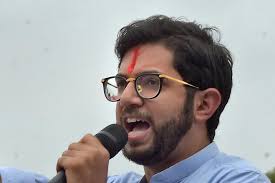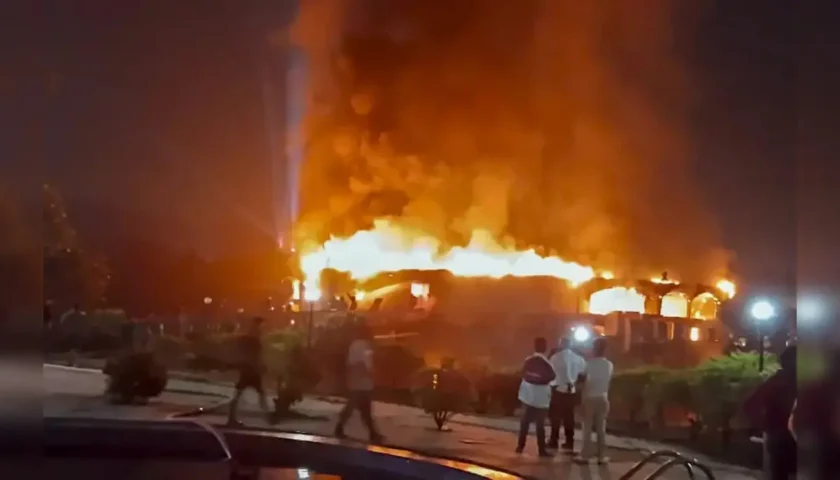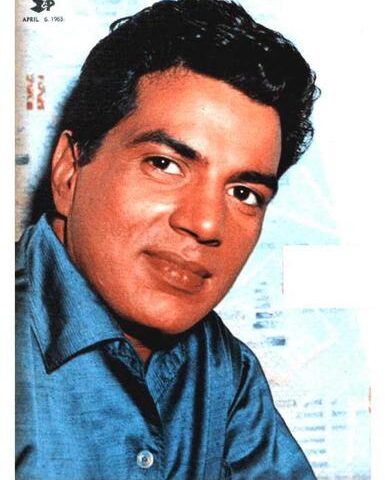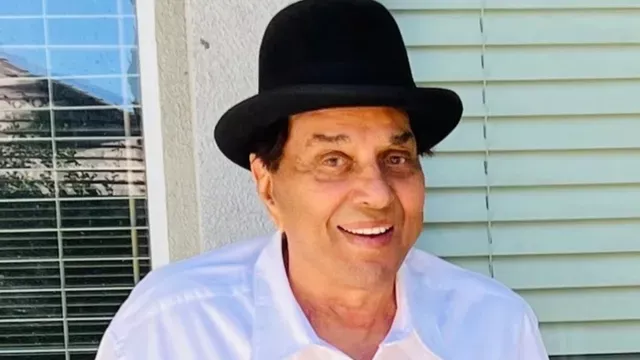Shiv Sena (UBT) leader accuses BJP of politicising terror and defaming Maharashtra as language tensions reignite across the state
A War of Words, a Deeper Identity Crisis
In a fiery escalation of Maharashtra’s language politics, Shiv Sena (UBT) leader Aaditya Thackeray on Sunday tore into the Bharatiya Janata Party (BJP), accusing it of harbouring “malice and poison” against the state and its cultural identity. The remarks came in response to BJP minister Ashish Shelar’s controversial comparison of recent Marathi language violence in Mumbai to the Pahalgam terror attack—a statement that has snowballed into a political firestorm.
Thackeray’s counterattack not only condemned the BJP’s “insensitive analogy” but also questioned the government’s failure to trace the actual perpetrators of the Pahalgam attack—an incident that shook the nation three months ago.
“Where did those terrorists go? Nobody knows if they fled to Pakistan or joined the BJP,” Thackeray told reporters, deploying sarcasm laced with serious political accusation.
This is more than a battle of barbs. It reveals the deepening ideological fault lines between regional identity politics and nationalistic narratives, with language, security, and communal undertones merging into a volatile mix.
The Flashpoint: Ashish Shelar’s Pahalgam Analogy
The latest political row erupted when BJP leader and state minister Ashish Shelar, reacting to rising tensions over attacks on non-Marathi speakers, said:
“In Pahalgam, they shot people after asking about their religion. Here in Mumbai, they beat up innocent Hindus for the language they speak.”
The statement, intended to highlight linguistic violence allegedly condoned by regional parties, backfired spectacularly.
Why the Comparison Hurt So Deeply:
-
Pahalgam Terror Attack (April 2024): An unprovoked assault on Hindu pilgrims in Jammu & Kashmir that left several dead and wounded.
-
Marathi Language Incidents (June–July 2025): Acts of vandalism and physical violence against Hindi-speaking individuals by elements allegedly affiliated with the Maharashtra Navnirman Sena (MNS).
Equating linguistic identity activism with a cross-border terrorist assault was seen by many as both inflammatory and disproportionate, especially in a state where regional pride is woven deeply into the cultural fabric.
Aaditya Thackeray Responds: ‘Malice and Poison Against Maharashtra’
Aaditya Thackeray wasted no time in responding.
In an emotionally charged press interaction, he said:
“The BJP has compared Maharashtra itself to the terrorists involved in Pahalgam. That’s the kind of poison they hold in their minds.”
He went further, asking why no arrests or definitive updates have come on the April Pahalgam attack:
“Three months have passed. Where did those terrorists go? Did they flee to Pakistan, or have they joined the BJP? Nobody knows.”
This wasn’t just political theatre—it was a calculated rhetorical strategy to highlight the BJP’s double standards on terrorism, governance, and its narrative manipulation.
The Underlying Faultline: Marathi Identity vs. National Integration
Maharashtra’s politics has long been a tug-of-war between regional pride and national integration.
-
The Shiv Sena, since its founding by Bal Thackeray, has always championed the Marathi Manoos.
-
The MNS, under Raj Thackeray, sharpened this further by physically opposing Hindi imposition and North Indian migration.
-
The BJP, while historically allied with both factions, has pivoted in recent years towards pan-Indian uniformity, often clashing with regional cultural assertions.
Recent Developments Amplifying the Divide:
-
The “Three-Language Policy”: Mandating Hindi as a compulsory third language triggered backlash, especially from schools and cultural forums.
-
Attacks on Non-Marathi Speakers: Multiple incidents of physical assault—some caught on viral videos—showed goons attacking shopkeepers and entrepreneurs for not speaking Marathi.
-
Entrepreneur Sushil Kedia’s Case: After he publicly criticised Raj Thackeray and MNS, his office in Worli was vandalised by alleged MNS workers. Later, Kedia backtracked, citing emotional reaction.
Aaditya’s intervention must be seen as a response to this unfolding cultural battle, not just a political swipe.
A Rare Reunion: Uddhav and Raj Thackeray Share Stage
Perhaps the most symbolic moment in this entire episode is the reunion of estranged Thackeray cousins, Uddhav and Raj, who jointly addressed a rally at the Worli Dome in Mumbai on Saturday.
It was the first time in nearly two decades that the two leaders appeared together—brought together by a common cause: resisting the “imposition of Hindi” and asserting Marathi identity.
“We are not against Hindi or Hindi speakers. But no one will be allowed to dilute Marathi from Mumbai,” Uddhav said.
Raj echoed: “This isn’t about hate. It’s about survival. Our language, our jobs, our culture—why should we apologize for protecting them?”
Their combined presence electrified the Marathi-speaking base and sent shockwaves through BJP ranks, who fear a regional consolidation against its expanding influence.
FIRs, Arrests, and the Rule of Law
The language row hasn’t just played out in speeches and slogans—it’s reached police stations and courtrooms.
On Saturday, five MNS workers were arrested for vandalising Sushil Kedia’s office. They were booked under multiple sections of the Bharatiya Nyaya Sanhita (BNS), 2023, including:
-
Section 223 (Acts endangering sovereignty),
-
189(2) and 189(3) (Instigation leading to violence),
-
190 and 191 (Threats and intimidation),
-
125 (Promotion of enmity based on language/region).
Meanwhile, Maharashtra CM Devendra Fadnavis issued a statement:
“The Mahayuti government will not tolerate hooliganism in the name of Marathi or Hindi. Every citizen has the right to live and work peacefully in this state.”
Despite the strong statement, critics argue that the BJP’s silence on Shelar’s remarks shows tacit approval of divisive narratives.
Social Media Backlash: Trending Hashtags and Public Sentiment
The incident sparked a flurry of online activity:
-
#BJPvsMaharashtra
-
#PahalgamToMumbai
-
#ThackerayReunion
-
#MarathiPride
-
#NoToHindiImposition
Many users, especially from youth and creative communities, defended the assertion of Marathi as Mumbai’s soul, while also rejecting violence.
Prominent columnist Faye D’Souza posted:
“Pahalgam was a terror attack. Comparing it to linguistic activism—however misdirected—is deeply problematic. Aaditya Thackeray is right to demand accountability.”
Editorial Insight: A Dangerous Precedent
Ashish Shelar’s remarks, while possibly unintentional in their framing, reveal something more dangerous: the growing tendency to flatten complex regional issues into national security metaphors.
When language-based protests are compared to terrorist massacres, the result is not just outrage—it is delegitimization of dissent.
BJP’s central strategy across states like Maharashtra, Tamil Nadu, and West Bengal has been to:
-
Use Hindi as a cultural unifier, despite regional sensitivities,
-
Target local parties as “anti-national” for resisting,
-
Control narrative via centrally-aligned media and political commentary.
But this time, the blowback has been swift—and united.
The Origins – A City, A Language, A Movement
Long before Aaditya Thackeray’s searing political rebuke to the BJP, language had already defined Maharashtra’s political DNA.
The Samyukta Maharashtra Movement (1946–1960) fought for a separate Marathi-speaking state with Mumbai as its capital, resisting attempts by Delhi to club Marathi speakers with Gujarati-dominated Bombay state. Over 100 martyrs died in protests demanding Mumbai for Maharashtra.
Key Achievements:
-
Formation of Maharashtra State (1960).
-
Mumbai, despite being India’s financial hub, was retained as its capital.
-
Language became central to identity, culture, and urban claim.
This wasn’t just about pride. It was about jobs, migration, resource control, and cultural self-preservation.
Rise of the Shiv Sena – From Sons of Soil to Political Power
Founded in 1966 by Balasaheb Thackeray, the Shiv Sena tapped into growing discontent over:
-
Influx of North Indians and South Indians into government and private sector jobs,
-
Perceived marginalisation of Maharashtrians in their own capital,
-
Alienation of the Marathi working class amid a changing, cosmopolitan Mumbai.
Bal Thackeray’s Sena created a movement that mixed linguistic nativism with Hindu nationalism, long before BJP’s rise.
“Maharashtra belongs to Maharashtrians. We won’t let our jobs, language, and identity be wiped out,” was the Sena’s clarion call.
The Marathi Manus doctrine was born.
MNS Emerges, Shiv Sena Splits – The Identity Politics Intensifies
In 2006, Balasaheb’s nephew Raj Thackeray broke away from Shiv Sena to form the Maharashtra Navnirman Sena (MNS), accusing Uddhav Thackeray of diluting the party’s regional focus.
Raj’s MNS revived direct-action politics, launching high-profile campaigns against:
-
Bihari migrants during railway exams,
-
Non-Marathi signage in shops,
-
The dominance of Hindi and English in state institutions.
This more aggressive stance won the MNS the youth vote, especially in urban centres.
But over time, Raj’s movement lacked ideological depth and organisational strength. The BJP’s rising dominance pushed both Shiv Sena and MNS into an identity crisis, forcing them back into Marathi-centric coalition politics in 2025.
The Economics Behind the Language War
Beyond sentiment, the Marathi vs migrant narrative is grounded in urban economic displacement.
Key Economic Grievances of Marathi Speakers:
-
Shrinking access to jobs in hospitality, retail, and BMC services.
-
Real estate boom pricing Marathi middle class out of Mumbai.
-
Dominance of non-Marathi contractors and vendors in civic infrastructure.
-
Cultural dilution—Marathi replaced by Hindi in signage, TV, cinema, and schools.
When Hindi-speaking communities expand rapidly in urban centres without proportional inclusion of locals, resentment deepens.
Aaditya Thackeray’s sharp reaction is based on an understanding of this anxiety—not just politics, but a cultural economic erosion.
The BJP’s Strategy – Unity by Homogenisation?
Since 2014, the BJP under Narendra Modi has pushed a model of:
-
One language (Hindi),
-
One identity (Hindu),
-
One nation (Bharat first).
This works electorally across large parts of north India but runs into resistance in linguistically proud states like:
-
Maharashtra,
-
Tamil Nadu,
-
Kerala,
-
West Bengal,
-
Telangana.
BJP’s Playbook in Maharashtra:
-
Wooing Marathi youth via ‘Hindutva Plus Nationalism’.
-
Using Governor and bureaucracy to weaken regional opposition.
-
Supporting language policies like the three-language formula that subtly prioritise Hindi.
-
Deploying leaders like Ashish Shelar to question regional movements as “divisive”.
But this comes at a cost: alienation of regional identity blocs, many of which now view BJP as a cultural invader, not just a political opponent.
Why Aaditya Thackeray’s Attack Resonates
Aaditya Thackeray’s “Where are the Pahalgam attackers?” remark wasn’t random. It:
-
Reminded citizens of the Centre’s failure to bring justice in a major terror case.
-
Shamed the BJP for equating terror with regional pride.
-
Reframed the Marathi row not as hate speech—but as resistance to cultural marginalisation.
His message:
“Marathi pride is not terror. We are not criminals for speaking our mother tongue. And don’t lecture us on violence when you can’t even catch real terrorists.”
In one stroke, he:
-
Counterpunched BJP’s nationalistic weaponisation,
-
Protected Maharashtra’s cultural honour, and
-
United Uddhav and Raj Thackeray’s bases.
The Political Fallout – 2025 and Beyond
With Assembly elections due in late 2025 or early 2026, this Marathi identity push could:
-
Reshape alliance structures in Maharashtra.
-
Revive the Sena base, especially in Mumbai-Thane-Kalyan belt.
-
Corner BJP, especially if it’s seen as out-of-touch with local sentiments.
The joint rally of Uddhav and Raj Thackeray, though symbolic now, may evolve into a strategic electoral front—challenging Mahayuti’s hold on urban seats.
Political analyst Suhas Palshikar said:
“The BJP’s biggest worry isn’t Sena’s aggression—it’s their reunion. That’s the original Marathi vote bank reuniting.”
Public Reaction – Ground Pulse and Social Churn
On the streets, Aaditya’s comments have sparked intense debate.
Interviews from Ground Zero:
Santosh Pawar, taxi driver (Dadar):
“Marathi people are not terrorists. BJP should apologise. Aaditya is right to ask—why no justice in Pahalgam?”
Asma Shaikh, school teacher (Mira Road):
“Violence is wrong. But making fun of our language issues? That’s even worse.”
Rakesh Kumar, migrant worker (Kandivali):
“We just want peace. But I understand Marathi pain too. BJP should help, not provoke.”
These voices reflect a layered emotional landscape—anger, fear, frustration, and fatigue with Delhi-style polarisation.
Media, Memory, and Misrepresentation
Mainstream Hindi media largely downplayed Aaditya’s counterattack and amplified Shelar’s analogy, reinforcing a BJP-favourable narrative.
However, Marathi, English, and digital regional outlets ran Aaditya’s remarks as lead headlines.
Popular Marathi dailies like Loksatta, Saamana, and Maharashtra Times carried op-eds defending the right to linguistic assertion without criminalisation.
Even international press (Al Jazeera, The Guardian) picked up the “Pahalgam vs Marathi” framing, warning about the danger of narrative conflation in multicultural democracies.
Lessons From History – How Not to Lose a State
Delhi has lost moral ground in many regional battles before:
-
Punjab in the 1980s, due to religious generalisation.
-
Kashmir post-2019, due to political suppression.
-
Tamil Nadu during Hindi imposition drives of the 1960s.
Maharashtra, proud yet practical, was never as volatile. But pushing too far, as Shelar’s remark suggests, can:
-
Break trust,
-
Fuel regionalism, and
-
Discredit national parties.
Aaditya’s question isn’t just political theatre. It’s a warning wrapped in sarcasm: “Don’t defame my people to hide your own failures.”
Editorial Conclusion: Identity is Not the Enemy, Indifference Is
As the dust settles on this explosive episode, here’s what remains:
-
Maharashtra’s youth, tired of token promises, are reclaiming their roots.
-
Aaditya Thackeray, often written off as urbane and soft, has emerged as a sharper, more fearless regional leader.
-
The BJP’s attempt to spin violent language acts as terror parallels has boomeranged, damaging its credibility.
The real question remains unanswered:
“If you can equate language pride to terrorism, and yet fail to find real terrorists—what moral right do you hold to govern?”
India’s greatness lies in its pluralism. Language wars and cultural insecurities are not solved through central diktats—but through dialogue, dignity, and decentralisation.
The people of Maharashtra are watching. And this time, they’re taking notes.




